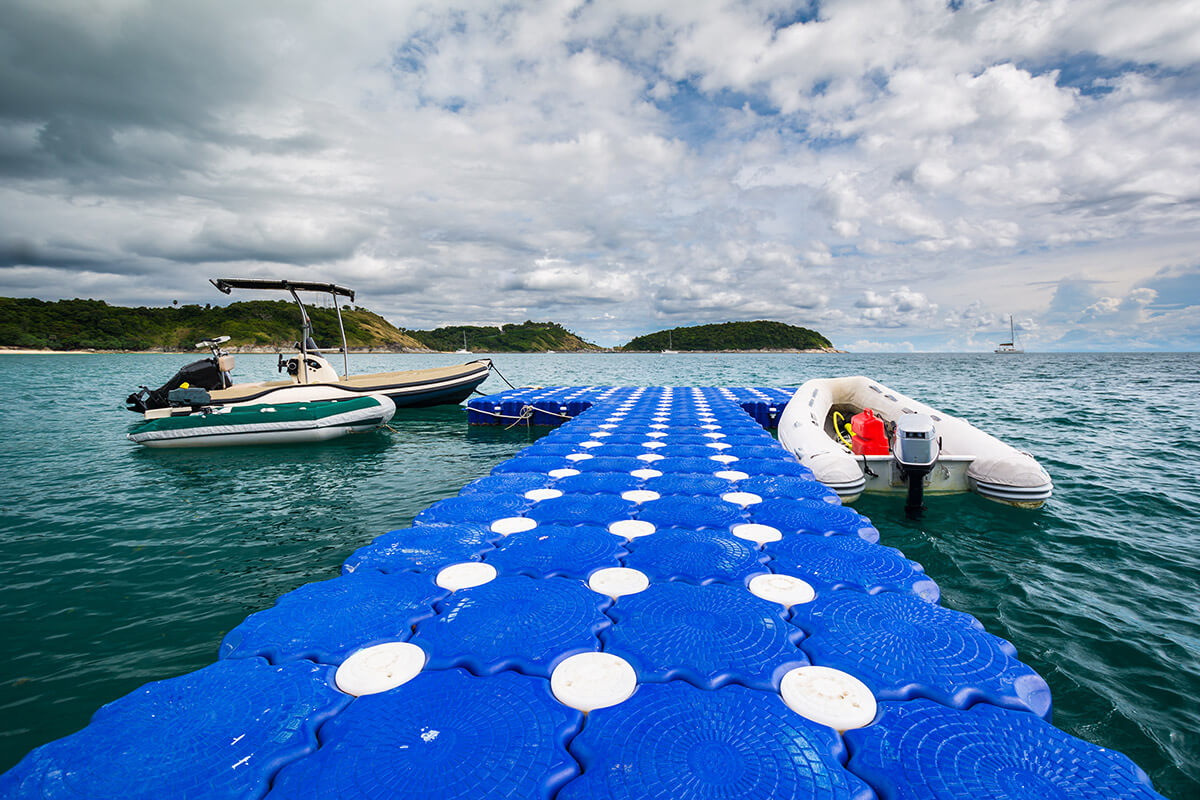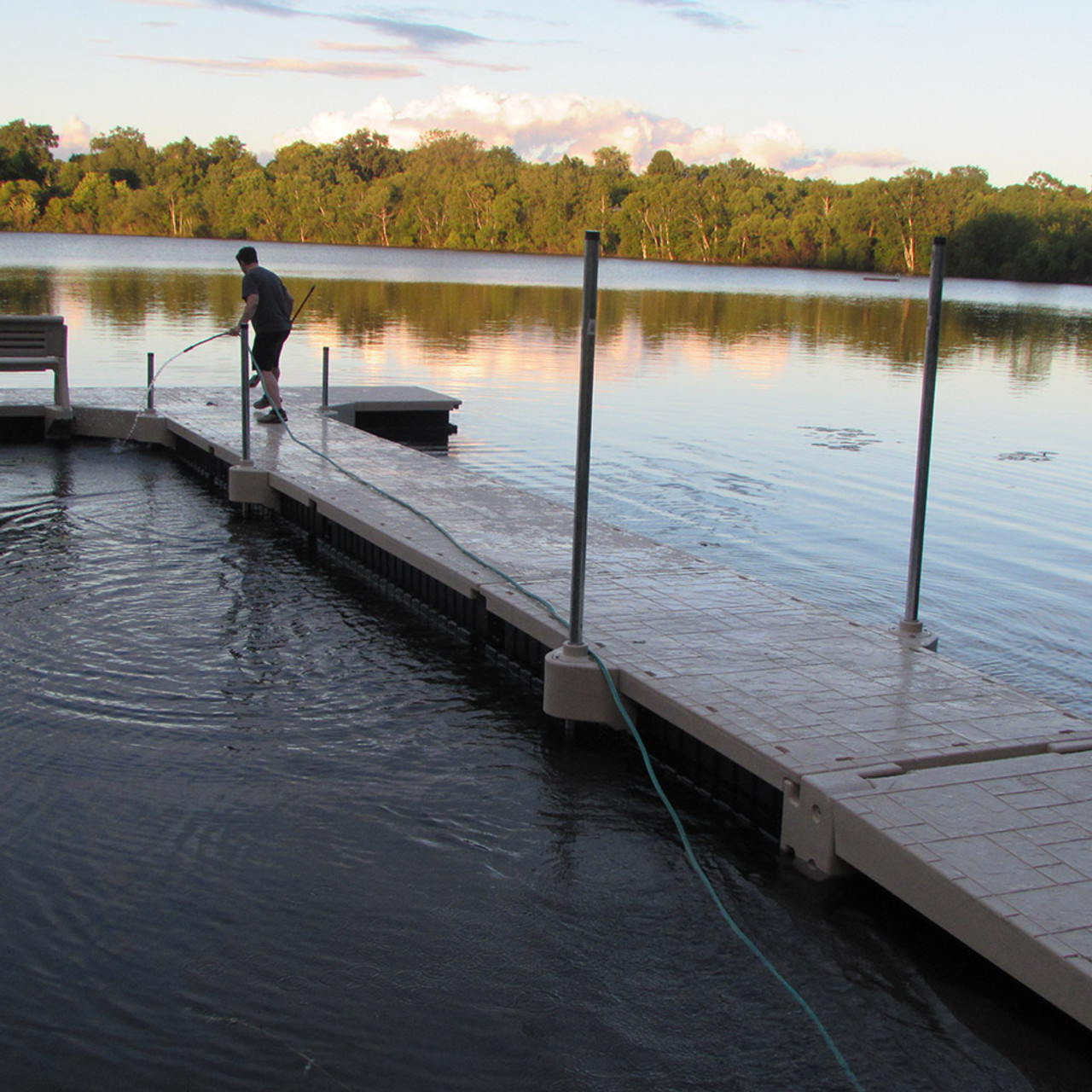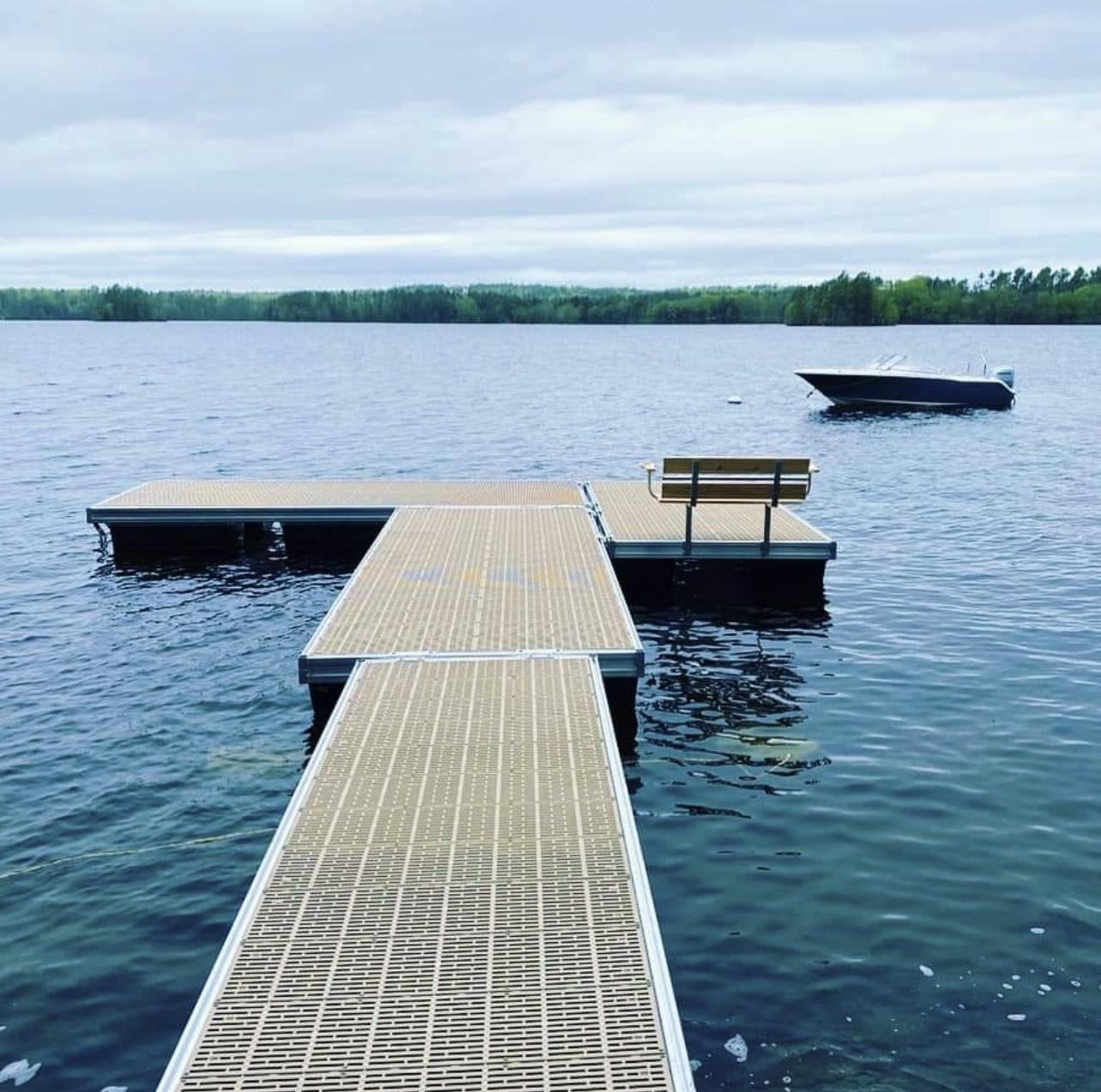Locate the Perfect Floating Dock Builder to Bring Your Beachfront Vision to Life
Locate the Perfect Floating Dock Builder to Bring Your Beachfront Vision to Life
Blog Article
Upgrade Your Waterfront With Resilient Floating Docks
Updating your waterfront with long lasting floating docks can considerably improve both capability and aesthetic appeals, giving a versatile service for different water tasks. With a range of materials offered, consisting of low-maintenance alternatives and standard wood, choosing the appropriate dock can complement your personal style and satisfy functional demands.
Advantages of Floating Docks
Floating docks deal a wide variety of benefits that improve their charm for different maritime applications. One of the main benefits is their adaptability to changing water degrees - floating docks. Unlike traditional set docks, floating docks fluctuate with the trend, making sure constant ease of access for boats and watercraft despite ecological conditions. This feature significantly lowers the threat of damage to vessels, as they remain securely tied also during fluctuations in water deepness.
Furthermore, floating docks are much easier to set up and relocate, supplying versatility for momentary or seasonal usage. Their modular layout enables customization to fit details demands, whether for personal marinas, residential beachfronts, or business applications.
Additionally, floating docks produce marginal disruption to the water environment, maintaining neighborhood ecological communities and minimizing the possibility of disintegration. They likewise offer enhanced security and stability for individuals, as their buoyant nature supplies a much more flexible surface than inflexible structures.
In addition, floating docks can facilitate a varied variety of tasks, such as fishing, swimming, and leisure boating, making them an important asset for beachfront development. Their convenience and practicality make floating docks a preferred option for a range of marine tasks.
Picking the Right Products
Picking appropriate materials for floating docks is vital to their longevity, performance, and overall effectiveness. When choosing materials, consider elements such as environmental exposure, maintenance requirements, and structural integrity. Typical materials include timber, plastic, aluminum, and composite choices, each offering distinct advantages and drawbacks.
Wood, while aesthetically pleasing, requires normal upkeep to protect against rot and degeneration. Pressure-treated wood can improve longevity, yet it might still catch water damages in time. Plastic floats, frequently made from high-density polyethylene, are resistant to deterioration and call for very little upkeep, making them an attractive choice for low-maintenance applications.
Aluminum is another sensible alternative, recognized for its toughness and light-weight homes. It is immune to rust and can withstand harsh weather conditions, although it may be more expensive than other materials. Compound products integrate the most effective qualities of wood and plastic, offering a resilient and low-maintenance alternative that mimics the appearance of wood without the linked downsides.
Inevitably, the option of material need to line up with the intended usage, environmental factors to consider, and spending plan restraints, making certain a practical and resilient floating dock that meets your details requirements.
Installation Refine Summary
The effective setup of a floating dock counts on mindful planning and execution, making certain that it runs efficiently in its intended setting. The very first action involves analyzing site problems, consisting of water deepness, coastline functions, and prevailing weather patterns, which will certainly notify the dock design and anchoring system.
Adhering to the site assessment, the next stage is to prepare the floating dock components. This consists of setting up the frame, securing floats, and affixing any required equipment. It is important to ensure that all connections are water-resistant and durable to hold up against marine conditions.
As soon as the dock is constructed, the setup process starts with placing the dock in the water. This can entail a crane or other lifting equipment, specifically for larger structures. Appropriate positioning is crucial for capability and safety.

Maintenance Tips for Longevity
Normal maintenance is crucial for making sure the longevity and optimum performance of a floating dock. To accomplish this, begin with regular inspections at the very least twice a year, concentrating on the integrity of the dock's framework, including the flotation tools and linking equipment. Search for indicators of wear, corrosion, or damage, and attend to any concerns promptly to avoid more wear and tear.
Cleansing is another vital facet of maintenance. Get rid of particles, algae, and barnacles from the dock's surface to stop unsafe conditions and preserve visual appeal. Utilize a light detergent and a soft brush to prevent harming the dock's products.
Additionally, make sure that the dock is properly anchored and click here now protected to hold up against seasonal changes in water degrees and weather. Check the anchoring system for security and make changes as necessary.
Enhancing Your Outdoor Aesthetic
To produce an aesthetically enticing outdoor area, including a drifting dock can considerably improve the general visual of your beachfront home. Floating docks are not just functional but can likewise act as a striking centerpiece that enhances the natural surroundings - floating dock builder. Offered in numerous materials and layouts, these docks can be tailored to match your residential or commercial property's architectural style and landscape
The enhancement of attractive components, such as incorporated lights or stylish railings, further elevates the dock's aesthetic allure. Take into consideration making use of all-natural timber surfaces, which blend seamlessly with the environment, or selecting modern-day products like aluminum or composite outdoor decking that provide a sleek, modern look.
Strategically placing planters or seating locations on or around the dock can produce inviting rooms that motivate relaxation and satisfaction of beachfront views. Additionally, integrating colors and appearances that balance with your landscape will produce a cohesive visual throughout your exterior area.

Verdict

Updating your waterfront with long lasting floating docks can dramatically enhance both performance and aesthetic appeals, providing a flexible remedy for various water activities. Unlike typical fixed docks, floating docks rise and autumn with the trend, ensuring constant access for boats and watercraft no matter of ecological conditions.Choosing proper products for floating docks is important to their long life, performance, and overall efficiency.As soon as the dock is assembled, the setup procedure starts with placing the dock in the water.In summary, floating docks offer many benefits, consisting of adaptability to water level modifications and a selection of product alternatives.
Report this page